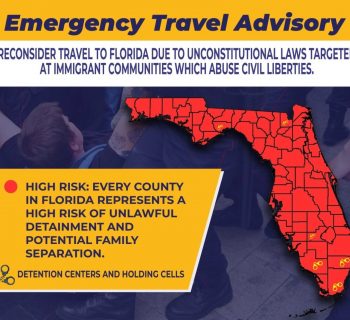California’s population declined by 173,000 between July 2020 and July 2021, bringing the estimated total to 39.37 million, according to state figures released Friday.
By Sarah Parvini | LATimes | DEC. 18, 2021 | Photo credit: Al Seib / Los Angeles Times
California’s population has continued to decline after falling for the first time on record, new demographic data show — underscoring shifting immigration patterns, declining birthrates and the large number of deaths at the hands of the pandemic.
The state’s population declined by 173,000 between July 1, 2020, and July 1, 2021, bringing the estimated total population to 39.37 million, according to estimates released by the state Department of Finance on Friday. The 0.44% decline is slightly less than the population loss reported for 2020, demographers said.
Three main factors contributed to California’s net population loss, demographers found: a continued decline in birthrates; fewer foreign immigrants, which officials attributed to federal policy in recent years; and more than 55,000 pandemic-related deaths.
Officials also attributed the decrease to the loss of 53,000 international students because of pandemic restrictions, as well as declines in domestic in-migration.
“The first two factors — which mirror nationwide trends — have contributed to the state’s population growth slowing and plateauing,” the state Department of Finance said. “Though a new federal administration took office in January, immigration policies were not altered until late February, and lags in implementing these changes remain. The additional Covid-19-related deaths on top of these existing trends further compounded the annual loss.”
Net international migration to California declined significantly to 27,000 people in fiscal year 2020 to 2021, researchers said, reflecting the suspension of visa processing in March 2020 through December 2020, which was extended to certain types of foreign worker visas through June 2021.
Demographers noted the first population decline ever recorded in the state earlier this year, highlighting larger trends that recently led to the loss of a Congressional seat.
But there is no evidence of a “CalExodus,” said Walter Schwarm, chief demographer with the state Department of Finance.
“Until immigration is a consistent force again, California may bounce around zero for a while, with slight positives and negatives,” Schwarm said. “It really is immigration that in the last 10, 15 years has provided the majority of growth in California. That immigration flow is an important part of our diversity and force for the economy as well. We are attracting a well-educated, ready-to-work, dynamic immigrant population that really helps the state considerably.”
Twenty counties, largely in the Central Valley, the Sacramento Valley, and the Inland Empire saw population gain, estimates show. And most inland counties had positive population growth rates, continuing a trend that started in 2016.
All nine counties in the Bay Area had a drop in population for the first time, demographers said. The decline could be explained in part by the pandemic-driven trend of remote work, in addition to the other main factors halting growth, Schwarm said.
“If we are hiring in the Bay Area and other places, they’re currently not in office. So none of the individuals hired in the last year and a half have had to move to California,” Schwarm said. “They could be working for any number of California firms, still residing in states they were in previously. As long as a number of employers maintain this telework policy, I don’t think we will see as many people moving to California.”
The lower number of people moving to the state is compounded by rising housing prices, he said.
“Housing prices are not cheaper now. They are more expensive,” he said. “That makes getting people to move to California difficult — especially when they don’t have to right now.”
Still, Schwarm expects California’s outlook to improve. Without pandemic-related deaths, he said, the state would have seen much less population loss.
“If we are talking a year from now, we could be back to zero or positive growth,” he said. “Let’s hope Omicron doesn’t turn out to be as deadly as other variants.”






